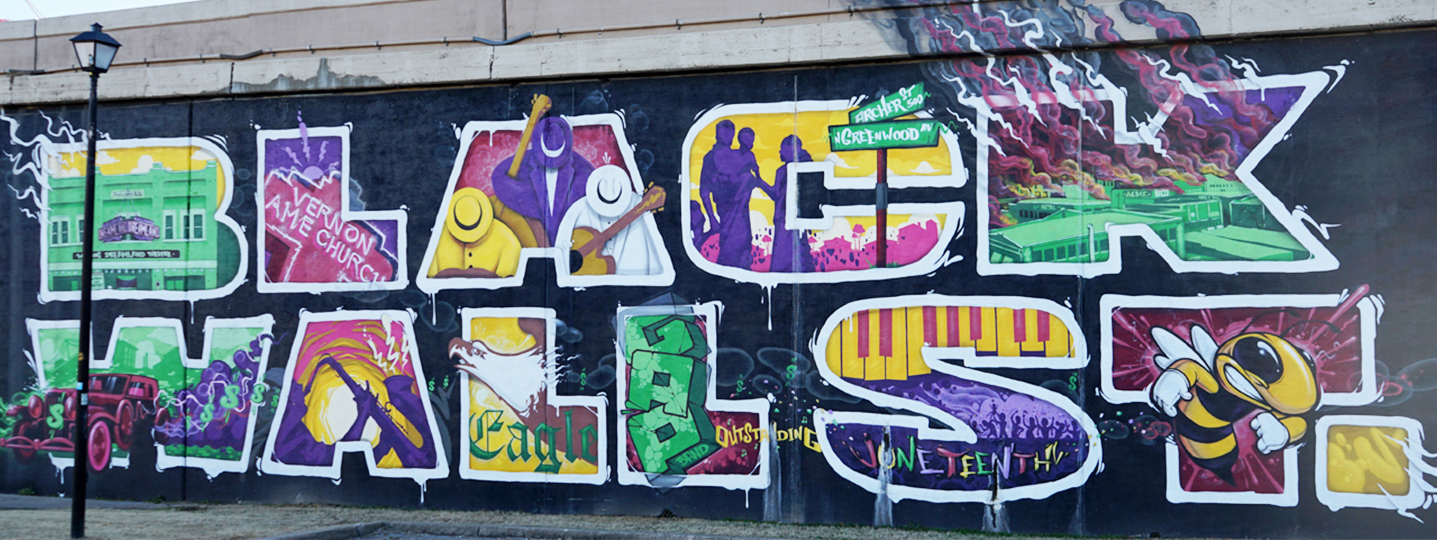February 26, 2020 | Black Wall Streets on Main Street | By Dionne Baux |
 A mural in Greenwood commemorating Tulsa's Black Wall Street. Credit: Daniel Jeffries, Tulsa Planning Office
A mural in Greenwood commemorating Tulsa's Black Wall Street. Credit: Daniel Jeffries, Tulsa Planning Office
While on a recent resource team visit to Washington D.C.’s U Street Main Street at Ben’s Chili Bowl, I was struck by U Street’s cultural and economic significance to the African American community and the number of districts UrbanMain is working with that once served as cultural and economic centers for African Americans in the early 20th century. As we celebrate Black History Month, I’d like to take this opportunity to highlight Main Street districts in Atlanta, Ga., Chicago, Ill., Tulsa, Okla., and Washington, D.C., in a four-part blog series exploring their histories as thriving Black Wall Streets, spotlighting local businesses operating there today, and conveying their vision of reviving these cultural districts to serve the needs of existing residents and visitors.
One of the best kept secrets in American history is the number of Black Wall Streets that served as economic centers in black populated areas across the country. The number of thriving African American business districts across the country and the African American wealth generated from these districts is a reminder of how investors, property owners, and residents could work together to create economic success and serve the needs of residents.
It is not my intention to romanticize why these districts were created and became economic powerhouses. They were created out of necessity to serve the African American population, who were not being served by white businesses and cultural and spiritual centers. Restrictive laws, known as Jim Crow (1896-1955), didn’t allow African Americans to assimilate into the majority communities, but instead were confined to certain areas of the city. Despite oppressive viewpoints and laws steeped in white supremacy, these African American businesses districts flourished and served as national examples of black economic self-empowerment and economic success.
This series is not meant to capture the full rich history of black wall streets that were created and thrived during the height of Jim Crow in America. There are many more, including Birmingham, Alabama’s The Fourth Avenue District; Harlem, New York; Jackson Ward in Richmond, Virginia; The Hayti Community in Durham, NC; Boley, Oklahoma; Houston Texas’ Third Ward (Emancipation Avenue); black districts in Oakland and Richmond, California, and many more. I hope this series piques your interest to learn more about these districts and explore African Americans’ history as entrepreneurs and community developers.
Finally, I also hope that this series serves as a reminder to our readers that lack of investment, oppressive policies, and antiquated viewpoints are not the only impediment to success in commercial district, but community apathy is, as well. The major takeaway for me is to determine how to arm more communities with tools, like the Main Street Approach, that encourage communities to chart their own destiny through not only property ownership, encouraging community pride, developing homegrown local entrepreneurs, building on community assets, but also by welcoming outside support that values the culture and history of these amazingly resilient districts.
Click on the buttons below to learn more about four Black Wall Streets and the African American-owned businesses in these corridors.